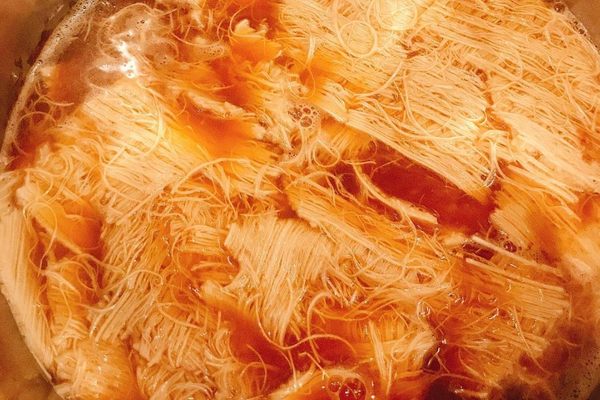Meats & Animal Products
Cow Blood
Drinking fresh blood is both sacred and ordinary for the Maasai people.
The Maasai people of southern Kenya and northern Tanzania know how to make the most of their cattle. They incorporate milk into meals, enjoy raw and cooked beef, use cowhides for bedding and dung to strengthen walls, and regularly consume cow’s blood.
Both blood and milk are consumed during rituals and celebrations, such as weddings, but also serve as regular sources of calories and nutrients. In this sense, scholars view the Maasai treatment of blood as “both ordinary and sacred food.” Cattle blood is high in protein and, among the Maasai, it’s considered beneficial for people with weakened immune systems, particularly those who have just given birth, been circumcised, or fallen ill. Elders who’ve had a rough night might also reach for a cup to sober up or reduce the intensity of hangovers. They may drink fresh, warm blood straight after it’s drawn, use it as an ingredient in cooked dishes, or mix it with milk. Some describe it as sweet and thick, with a film that forms over the surface just seconds after collection.
In order to maximize the amount of blood each cow can produce, Maasai men don’t slaughter their cows during the bloodletting. Instead, a group holds an animal down as one man nicks its jugular (typically via an arrow shot at close range) once a month. They catch the blood in a clay pot or calabash (bottle gourd) below the incision, then quickly clot the wound once the vessel is full. Smearing mud or hot ash over the cut stops the bleeding, and the animal lives to see another day. The result is sustainable bloodletting that minimizes injury.
The bloodletting process isn’t just humane; it’s essential. Since cattle play a key role in Maasai culture, they are also a status symbol. Herd size dictates social standing, and collecting cattle is common practice. Keeping these animals alive and well provides the dairy and blood that fortifies Maasai herders and their families, both physically and culturally.
Written By
 rachelrummel
rachelrummel
Sources
- www.travelground.com/blog/strange-african-delicacies
- www.thomsonsafaris.com/blog/traditional-maasai-diet-blood-milk/
- www.maasai-association.org/maasai.html
- munchies.vice.com/en_us/article/4xb993/a-proper-maasai-wedding-starts-with-a-cup-of-fresh-cows-blood
- www.jstor.org/stable/40461671?seq=1#page_scan_tab_contents
















